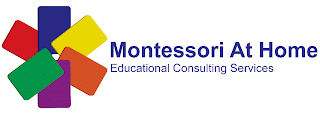Not every teacher is a parent, but every parent is a teacher. You are your child’s first and best teacher.
In the first six years of life, your child learns 80% of what he will ever know. He is like a sponge, taking in everything in his environment. Beginning in infancy, everything he does, sees, hears, smells, tastes and feels is a learning experience. By taking advantage of these facts, you can give your child a great head start.
Your child wants to be like you and emulates you in every way he can. By being a good role model, by showing the values you want your child to learn, you are teaching by example. To show the values of respect for others and good manners, say good morning every day when your child wakes up, give a hug and a kiss, say “please” and “thanks”. In the Montessori classroom, it is customary for the teacher and child to say good morning and shake hands every day. Model a respect for objects to show that things have value. Handle toys, books, and all items properly, and put them away when you’re finished. If you put things away, your child is much more likely to do the same. It helps to make putting toys, books, games, clothing, etc, away part of the process.
By doing things in the most efficient way, you will teach your child the easiest way to master an activity. For example, put your shoes away when you take them off instead leaving them by the door; carry objects in a way that will avoid dropping, spilling, i.e., one at a time, using both hands. Demonstrate how to do a task step by step – for example, brushing teeth: how to squeeze the appropriate amount of toothpaste onto the brush, brushing all areas of the teeth, rinsing the mouth, rinsing the toothbrush, putting it away, rinsing the sink, drying hands and face, hanging up the towel. Taking the time to show your child the proper way to do something is a great service to your child and saves you time in the long run. Behavior may not happen overnight, it is a process.
TIPS
- Avoid distractions - Say as little as possible when showing your child how to do a task or activity
- Think in the smallest steps possible - things that are old hat to you are new to your child
- Much of learning is not formal learning: alphabet and counting songs; reading, games, puzzles, caring for plants and pets
- Play car games: What starts with ‘m’ sound? What comes after 5? Name a red fruit. What rhymes with cat?
- Expose child to stimulating environments: Find points of interest when you go places. When you go for a walk or to the park, look at nature, point out birds, trees, flowers, insects, note different shapes of leaves, etc.
- Use vocabulary as a tool for learning. For example:
- At the grocery store – Name fruits, vegetables, etc.; Note that the can is heavy, the bread is soft; the milk carton is cold, etc.
- When doing any activity, name everything you can: cooking utensils, garden tools, etc.
- Name colors, shapes, names of flowers, birds, not just ‘see the bird’ but ‘see the cardinal’.
- Follow up on topics your child shows an interest in.
Each child develops in accordance with his inner needs. By being a role model and making activities and information available to him, you are creating an environment for his intellectual, physical and mental growth and independence.

No comments:
Post a Comment